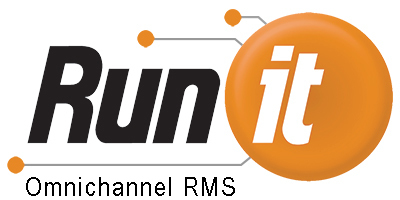Shoppers expect a consistent experience at every store location they visit, but delivering on this expectation can be difficult for store owners. Staff, inventory and warehouse management offer unique challenges for retailers with multiple store locations, from effectively utilizing employees to keeping stores stocked with the right inventory. A cloud-based point of sale (POS) system addresses these concerns to empower retailers to properly manage multiple stores and scale their operations.
Staff Management
The average employee engagement rate is 34.3 percent according to Gallup, and part of this low engagement rating comes from staff management issues. If employees are disengaged and directionless, it can result in high turnover rates, shrinkage and reduced sales. Cloud-based POS systems offer employee management features to handle all staff across multiple locations.
Retail managers gain full visibility on employee information, such as their schedules, attendance and sales performance. The managers use this strategic information to improve store sales figures, increase employee engagement and reduce turnover rates. A modern POS system provides deep information breakdowns on sales figures, so retail store managers can place sales staff in their best-performing categories.
Inventory Management
Many retailers juggle multiple store locations and eCommerce channels when working on inventory management. Each store has its own local preferences to handle and may operate as a ship-to-store distributor for online orders, while all locations need to be appropriately stocked to cut down on customers encountering out-of-stock products. Effective inventory management and visibility also play a major part in getting customers through the door.
Marketing Tech Blog reports 73 percent of customers respond positively to being able to access retail inventory information online. They check for product availability when they are making purchase decisions to find the closest in-stock option. Retailers with a cloud-based POS system have real time inventory access across all store locations and eCommerce channels, so customers can get the information they need to choose the right location to visit, improving their overall experience with the brand.
Retail store owners and managers use inventory analysis to track sales trends, plan inventory ordering and gain insight over inventory across multiple store locations. Store performance can be carefully fine-tuned across all locations and on a store-by-store level.
Warehouse Management
There’s a need for retailers to achieve a fine balance between limiting the inventory sitting in a warehouse and making sure stores receive enough inventory at the right time. Without a good balance, a retailer ends up with too much stock taking up warehouse space or faces constant out-of-stock problems at store locations. Supply Chain Digest found $1.43 in retail inventory for every $1 sold in the stores. A cloud-based POS system’s warehouse management features can automate key processes to keep inventory moving at a steady pace without overloading the warehouse. For example, a warehouse management feature can handle inventory restocking based on several distribution methods, such as a minimum inventory number or adjusting to seasonal sales volume demands.
Retailers with multiple store locations need a scalable and accessible POS system to handle their needs. A cloud-based POS system enables retail store owners to manage their staff, inventory and warehouses effectively with critical data, useful features and better visibility into every store. Instead of increasing the hands-on time required from retailers with each new store opening, retail business owners can leverage technology to work more efficiently to fuel their growth.






